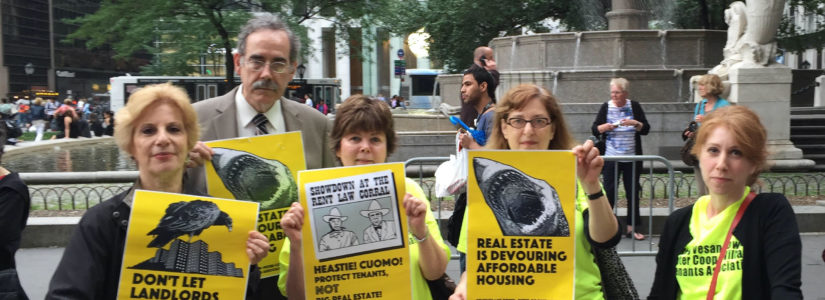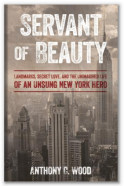
Book Review – Saving Stuyvesant Town: How One Community Defeated the “Worst Real Estate Deal in History”

By Elizabeth Rohn Jeffe, Vice-Chair
Dan Garodnick, Saving Stuyvesant Town: How One Community Defeated the Worst Real Estate Deal in History (New York: Cornell University Press, 2021).
In Saving Stuyvesant Town, Dan Garodnick recounts in compelling detail how residents of Stuyvesant Town and Peter Cooper Village, known collectively as Stuyvesant Town (“Stuy Town”), mounted an ultimately successful campaign to preserve that community as both a physical place and as a way of life. The long-running battle took place from 2006 until 2015. Garodnick writes with the passion and knowledge of a frontline participant: as a member of the City Council at the time, representing the Stuy Town district, and a lifelong Stuy Town resident, he was a key player in the nine-year struggle.
Insurance giant Metropolitan Life Insurance Company (“Metlife”) created Stuy Town in the 1940s for middle-class (and for many years, white-only) tenants, with special consideration given to World War II veterans. The vast complex of red brick mid-rise buildings, parks, and playgrounds comprises 80 acres, between East 14th and East 23rd Streets, from First Avenue to Avenue C. Approximately 30,000 people call it home. Stuy Town was a public-private venture, with State involvement and support. Ironically, the construction of Stuy Town in what had been historically the “gashouse district” was not itself free of controversy— razing the area’s tenements caused a massive relocation of low-income residents.
MetLife put Stuy Town up for sale in 2006, surprising the public in general and the residents of Stuy Town in particular. Commercial realtor Tishman Speyer and investment firm BlackRock subsequently announced plans to purchase Stuy Town for a record-breaking $5.4 billion, of which $4.4 billion was debt. For Stuy Town residents, this posed an existential threat, since current laws would permit previously controlled rents in Stuy Town’s over 11,000 units to rise following improvements made by new owners.
And more than just the cost of rent was at stake. The park-like setting of Stuy Town could be radically altered; new buildings could be erected in the existing green spaces that give Stuy Town its special ambience, a scenario that would obliterate a key element of Stuy Town’s original design as a leafy sanctuary in a city of concrete. Residents reacted swiftly. They first tried to buy Stuy Town themselves, by proposing a homeownership plan. When this option failed, they refused to admit defeat, and engaged public support through demonstrations and press coverage. Most importantly, they mounted legal challenges involving limits on decontrolling rents based on Stuy Town’s history as a publicprivate entity. The Stuyvesant Town Tenants Association was central to all these efforts.
The ensuing real estate collapse of 2008, which led to the new owners defaulting in 2010 on their highly-leveraged purchase, gave Stuy Town supporters more time in which to fight. Finally, in 2015, with the support of Mayor Bill de Blasio and the ongoing assistance of Deputy Mayor for Housing and Economic Development Alicia Glen, Stuy Town was sold to the investment firm Blackstone Group for $5.3 billion, with the agreement that 5,000 apartments for tenants of modest incomes would remain affordable for 20 years. As a result of a lawsuit previously won on behalf of the tenants, another 1,400 units would also be safeguarded until 2025. The City pledged $225 million in funding as part of this plan.
For preservationists, urban planners, and everyone who cares about the quality of urban life, Garodnick’s account is a gold mine of information, describing in detail how a community and a local political leader can coordinate various resources to win a critical battle with far-reaching consequences. The author’s comprehensive narrative, which includes in-depth discussions of pertinent real estate law and court cases, provides an abundance of “takeaways” from this uniquely complicated and exciting case history. Indeed, readers can use Saving Stuyvesant Town as a template for constructing their own preservation narratives. The sources listed in the book, from Garodnick’s personal notes, interviews that he conducted, emails, and tenant association press releases, to media coverage and photographs, provide a virtual roadmap of how to document a preservation battle. Additionally, Saving Stuyvesant Town expands preservationists’ usual perception about what to save—buildings, green spaces, or streetscapes—by demonstrating that a broader, socioeconomic imperative can be part of their mission.
Garodnick, currently the chair of the New York City Planning Commission, merits accolades for this outstanding example of documenting an important chapter in the history of preservation in New York City. A preservation tale both uplifting and cautionary, Saving Stuyvesant Town is a must-read, not only in New York, but in all cities, as the crisis of unaffordable housing continues.




